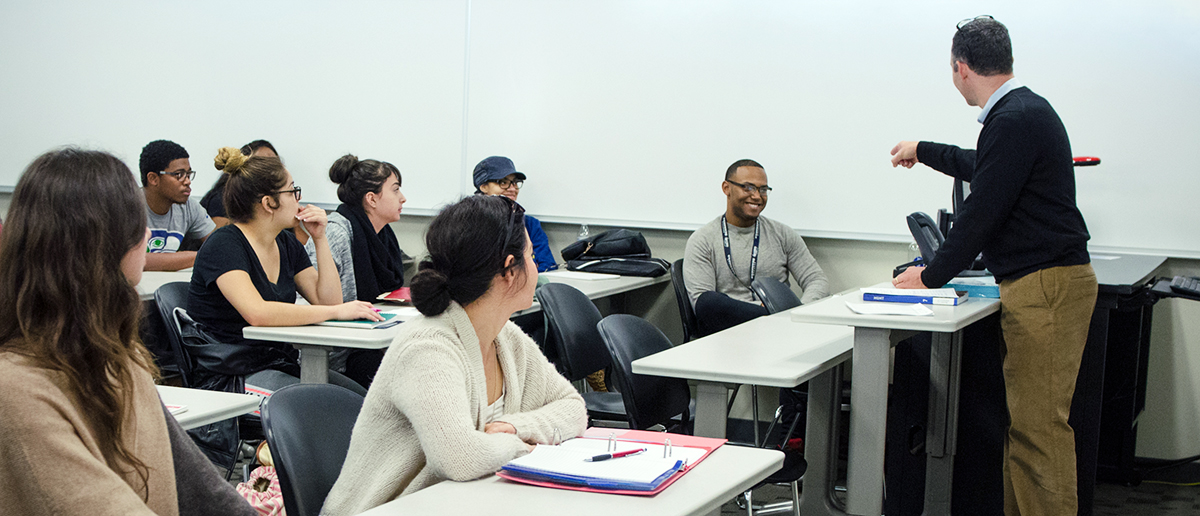Strategies for Dev Ed: The IES Practice Guide and Promising Reforms
By Thomas Bailey

It’s clear from research conducted over the past several years that developmental education as traditionally offered doesn’t work well for many students. Students assigned to dev ed who are near the higher end of the readiness scale often do better when placed into college-level courses, and those at the lower end are unlikely to make it all the way through the traditional multisemester sequences of remediation before dropping out.
But we also know that many students arrive at college with weak academic skills, and colleges need to help them get ready for the rigors of college-level work. Open-access institutions such as community colleges need to meet students where they are.
Overall, only 20 percent of students referred to developmental math and 37 percent of those referred to developmental reading complete a college-level course in the subject within three years of starting remediation, according to a CCRC study of Achieving the Dream colleges.
Over the last 10 years, colleges have tried a host of reforms to make developmental education more effective: compressing the sequence of courses, embedding dev ed curriculum in subject-specific courses, and improving the accuracy of developmental placement decisions, to name a few. Fortunately, researchers have been tracking the reforms, and we now have a critical mass of studies that allows us to assess—at least preliminarily—what works and what doesn’t.
The Department of Education’s practice guide on developmental education (Strategies for Postsecondary Students in Developmental Education—A Practice Guide for College and University Administrators, Advisors, and Faculty), released in November, surveys the research and lays out six recommendations backed by evidence for college leaders working to improve dev ed:
- Use multiple measures to assess postsecondary readiness and place students.
- Require or incentivize regular participation in enhanced advising activities.
- Offer students performance-based monetary incentives.
- Compress or mainstream developmental education with course redesign.
- Teach students how to become self-regulated learners.
- Implement comprehensive, integrated, and long-lasting support programs.
The recommendations of the What Works Clearinghouse practice guides are based on studies that meet high standards of evidence combined with the judgment of an expert panel. In this case, I chaired the panel, and it included two other CAPR researchers, Angela Boatman of Vanderbilt University and Michael Weiss of MDRC.
The six recommended practices were deemed to have minimal to moderate supporting evidence in the 19 studies that made it through the review process. Nevertheless, the first five recommendations are considered to be solid and had the backing of the panel. The sixth—comprehensive, integrated, and long-lasting support programs—is not only backed by stronger evidence but also has the biggest impacts.
A major reason for the more significant impacts seen in programs focused on comprehensive support, such as CUNY’s ASAP program, is that they integrate several smaller interventions that reinforce each other and tackle an array of problems that derail students in college. For the same reason, the six recommended practices are more likely to have a significant effect on students if implemented together as a comprehensive set of interventions.
As colleges continue to innovate, and the research base continues to grow, we will have a better sense of the impact of the reforms separately and together. Some of the shortcomings identified in the evidence we expect will be addressed by the studies underway now as part of CAPR. One study is a randomized controlled trial of multiple measures for assessment and placement at several State University of New York community colleges. A second is an evaluation of the Dana Center Mathematics Pathways Project (DCMP), which has developed promising changes to math remediation. A third study is a national survey of two- and four-year colleges that asks about the types of reforms and services available to students with weak academic skills. In four or five years, after more students have gone through reformed programs and more studies have been completed, we can expect much more evidence pointing toward better ways to educate students.
Change is sorely needed. Students who could succeed are being discouraged, slowed down, and often left to drop out by our current dev ed system. Armed with even better evidence on what developmental approaches work for which students, colleges will be able to clear roadblocks to degrees for millions of students.
